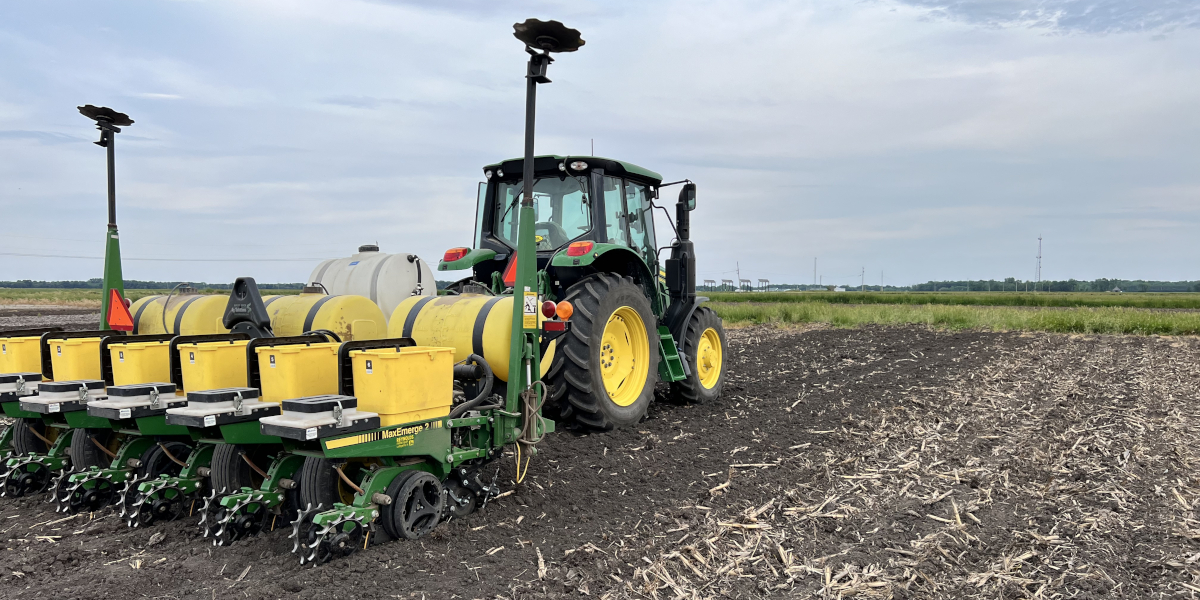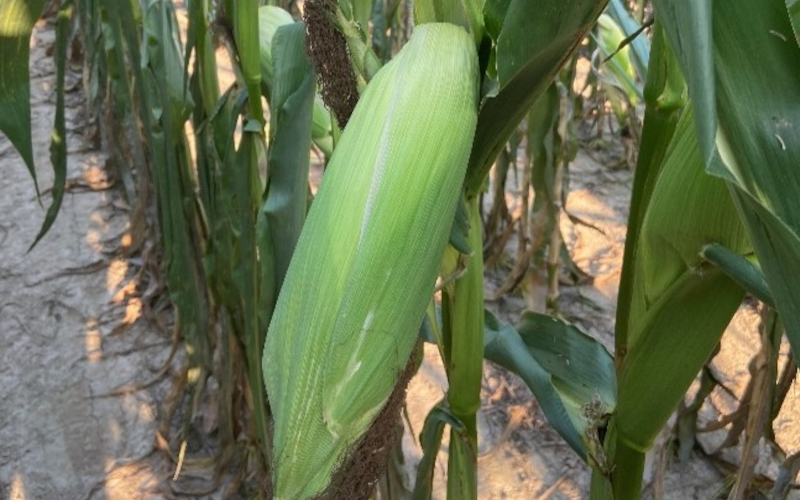How Deep Should Corn Be Planted?
During the heat of planting, one thing that often can be forgotten is thoroughly checking and understanding two items, 1) what seed depth am I planting at? and 2) is my seeding depth consistent, especially across all of my individual row units? We may often be inclined to use the “set it and forget it” approach to seed depth, yet this may not always be the best idea. In order to get corn started off on the right foot, it is important to achieve both rapid and consistent emergence following planting. One aspect of achieving rapid and consistent plant emergence is by choosing the correct seeding depth and ensuring there is adequate and uniform moisture at the chosen seeding depth. The most common seeding depths recommended for corn range between 1.5 and 2 inches deep, and these planting depths can work very well within most conditions, however, certain soil moisture conditions at planting may warrant further examination/change in seeding depth.
A corn seed imbibes soil moisture within the first 24 – 48 hours after planting, therefore maintaining both adequate and uniform moisture at seeding depth (not too wet and not too dry) within the first 48 hours is important. If the soil remains too dry, then the seed may be delayed in emergence until precipitation occurs. Furthermore, if the soil remains saturated after planting, the seed may rot and die. If the soil conditions are dry at planting, then a seeding depth of 2 inches may be too shallow and not place the seed in adequate/uniform soil moisture conditions. Therefore, if the moisture at a 3-inch depth is more adequate and uniform, and no additional rainfall is expected in the next week, then it may be worthwhile planting the seed at a 3-inch depth instead of a 2-inch depth. It is important to remember that corn can physically emerge at seeding depths lower than 2-inches, therefore, planting deeper can help ensure more consistent plant emergence when soil moisture conditions are dry. However, if soil moisture conditions are adequate it is likely ideal to not go much deeper than 2 – 2.25 inches. If planted too deep and soil moisture conditions are adequate, emergence can become delayed, thus further exposing the corn seed to various stresses (e.g., disease, insects, etc.). Furthermore, if corn is planted too shallow <1.5 inches, you can run the risk of poor root development, stand establishment, and lodging.
To further examine the impact of seeding depth on corn emergence and yield, a research trial was established at the Throckmorton Purdue Agricultural Center in Lafayette, IN. The research trial examined corn seedling emergence timing and yield differences across four different seeding depths and two different hybrids. The trial was designed as a randomized complete block design with three replications. Plots measured 30 feet wide (12, 30-inch corn rows) by 400 feet long and the center six rows were harvested with a commercial combine with a calibrated yield monitor. Trial results are presented below:
Results:

Research Trial Summary:
This research trial was planted on May 13, 2022, and received a total 1.75 inches of rainfall within the first two days following planting, which may have pushed the seed deeper and successfully supplied adequate moisture following planting. However, the month of June was very dry, with a total precipitation amount of only 0.6 inches of rainfall, which may have contributed to some lost yield potential. Across all seeding rates examined, the corn hybrid Becks 6241Q (112-d) out yielded the other hybrid in this study, Becks 5909AM (109-d), by an average of 10 bushels per acre (bu/ac) (214 bu/ac vs. 204 bu/ac) (Table 1). In addition, across both hybrids examined, the seeding depth of 1-inch resulted in the fastest emergence (average 42% emerged 7 days after planting), whereas the 3-inch depth resulted in the slowest emergence (average 1% emerged 7 days after planting) (Table 1 and Figure 1). Despite the difference in emergence timing, final emergence percentage and final plant stand was not different between the two hybrids, or the four seeding depths examined (Table 1 and Figure 1). What was interesting about this study is that the two different corn hybrids actually varied in their yield responses to seeding depth. The hybrid Becks 6241Q, had the highest yield at the 1 and 2-inch seeding depths, whereas the hybrid Becks 5909AM, had the highest yield at the 2 and 2.5-inch planting depths (Table 1). Furthermore, corn hybrid Becks 6241Q, exhibited a higher tolerance to more shallow planting depths in comparison to the hybrid Becks 5909AM (Table 1). At the 1-inch planting depth, the yield of Becks hybrid 6241Q was not statistically different than the yield at the 2-inch planting depth, suggesting no yield was lost at this shallow planting depth. However, for Beck hybrid 5909AM, yield was reduced by 6 bu/ac at the 1-inch planting depth in comparison to the 2.5-inch planting depth, suggesting yield was lost at a shallower depth with this specific hybrid. Overall, this research trial results suggests different hybrids may respond differently to various planting depths, and if you are using multiple hybrids on your farm, this may be something to pay attention to. However, more data will be required to make this conclusion. Overall, this research highlights the importance of choosing the correct planting depth, and shows that a deeper planting depth (e.g., 3 inches) is not always needed if soil moisture is adequate after planting. In addition, across both hybrids, a 2-inch planting depth resulted in the highest and most consistent yield, which is consistent with previous recommendations when adequate soil moisture is present at planting.

Figure 1. Corn seedling emergence (%) after corn planting in response to seeding depth. Data includes both hybrids examined. Throckmorton Purdue Ag Center. Lafayette, IN 2022.
Additional Resources:
Nielsen, R.L. 2021. Soil moisture and corn seed depth. Corny News Network. Purdue Univ. Ext. https://www.agry.purdue.edu/ext/corn/news/timeless/SoilMoistSeedDepth.html






